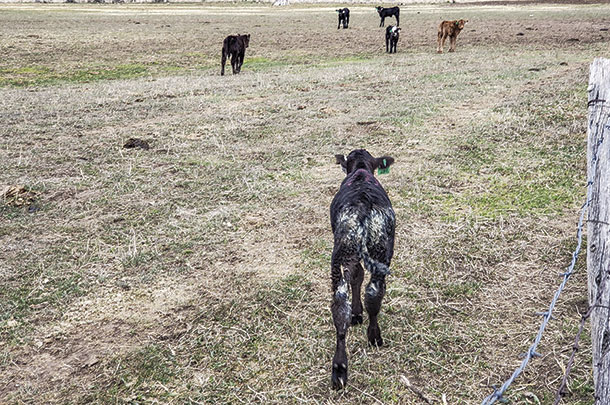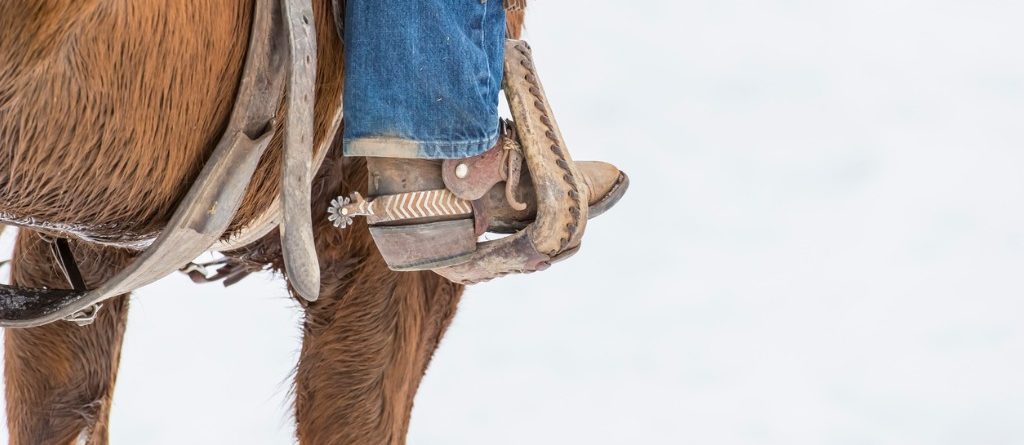Megan Van Emon for Progressive Cattle Published on 24 December 2019
Calving season is a highly anticipated event for cow-calf producers. They’ve spent the last year making genetic selections and management decisions in hopes for a healthy and superior calf crop.
But without due diligence, scours can wreck a year’s worth of work.
Scours is another term for diarrhea and can be caused by several infectious agents, such as viruses, parasites and bacteria. Scours is typically observed in young calves and results in watery feces, which can be green, brown, gray or yellow in color. The watery feces cause water loss from the body, which can lead to dehydration. Due to the excessive loss of water, the body also loses electrolytes, which are required for bodily function. Severe and prolonged scours can lead to metabolic acidosis, which can kill a calf if not corrected.
There are also noninfectious agents, mainly diet, that may cause scours. Calves consuming more milk than they can digest may cause diarrhea. Calves consuming dirt, sand or other foreign objects can result in scours. Additionally, young calves consuming feeds they cannot yet digest, such as molasses, can also cause scours.
Typical signs observed when calves have scours include watery feces, dehydration, weakness, fever and depression. As scours becomes more severe, calves will lose their suckling reflex and will have irregular breathing. During metabolic acidosis, breathing will be rapid to decrease the carbon dioxide in the blood. As scours nears its final stages, breathing will become slow and deep.
Bacteria, parasites and viruses can cause scours. Bacteria that can cause scours are salmonella, Escherichia coli and Clostridium perfringens. Several viral agents can cause scours including coronavirus, rotavirus, and bovine viral diarrhea (BVD). Additionally, the parasites coccidia and Cryptosporidium parvum can also cause diarrhea in young calves.
Typically, scours occurs during the first few weeks of life and can be caused by multiple infectious agents at once. Cows normally shed these infectious agents. Care should be taken by the producer handling these calves, as many of the agents can be transferred to humans.
The most effective treatment for scours is to focus on correcting dehydration and metabolic acidosis. Administering oral electrolytes can help correct the metabolic acidosis and provide the needed electrolytes, which will allow the calf to stand and suckle. If the calf cannot stand and oral electrolytes are not sufficient to counteract the symptoms, intravenous fluids may need to be administered.
Other treatments such as administration of antibiotics may be needed if the scours are caused by a bacterial agent. Antibiotics will not work against scours caused by viral agents. Consult with your veterinarian to determine the best treatment plan for your calves.
Supportive care will be needed for affected calves. Calves should be protected from the weather and should continue to be fed as needed if the calf cannot suckle. A good-quality milk replacer should be given if calves cannot suckle. Other supportive treatments may include items that aid in reducing diarrhea and nausea, such as kaolin, pectin and probiotics, but efficacy of these treatments is variable.
One of the best ways to reduce the possibility of scours is prevention. Two of the most effective ways to prevent scours are to (1) maintain a clean calving area and (2) segregate calves by age to ensure older, healthy calves are not passing infectious agents to newborn calves. Changing your calving area based on when cows will calve can reduce the spread of infectious agents by cows and older calves. Do not calve in areas where cows have been kept for long periods of time. Bedding should be removed regularly to reduce the potential spreading of infectious agents.
Other ways to prevent scours are to ensure all calves receive good-quality colostrum in the first six hours post-calving. Colostrum is extremely important in a calf’s immune system development, and if a calf does not receive adequate colostrum from the cow, a colostrum replacer should be given. Additional preventions include a balanced mineral program, cow vaccination program, good overall nutritional program, proper pen or pasture drainage, isolation of sick cows and calves and a good biosecurity program.
A good biosecurity program ensures that when checking cows and heifers, infectious agents are not transmitted by vehicle or apparel of the producer. If sick cows and calves are isolated from the main herd, make sure to change boots when checking on healthy cows and calves. Clean your boots often in a boot wash to reduce contamination of clean areas with dirty boots. If traveling to another location outside of the ranch, make sure to clean your boots before and after you travel.
Having a good herd health program is the key to the prevention of scours. It may not be possible to eliminate scours from your herd, but you can limit the outbreak of scours among your calves. Consult with your veterinarian to set up a prevention, treatment and control plan for scours. ![]()
PHOTO: While eliminating scours from your herd may not be possible, having a good herd health plan can limit the chances of an outbreak. Photo by Paul Marchant.
Megan Van Emon is an extension beef cattle specialist at Montana State University. Email Megan Van Emon.











